How the COVID-19 Crisis Validated ESG Investing
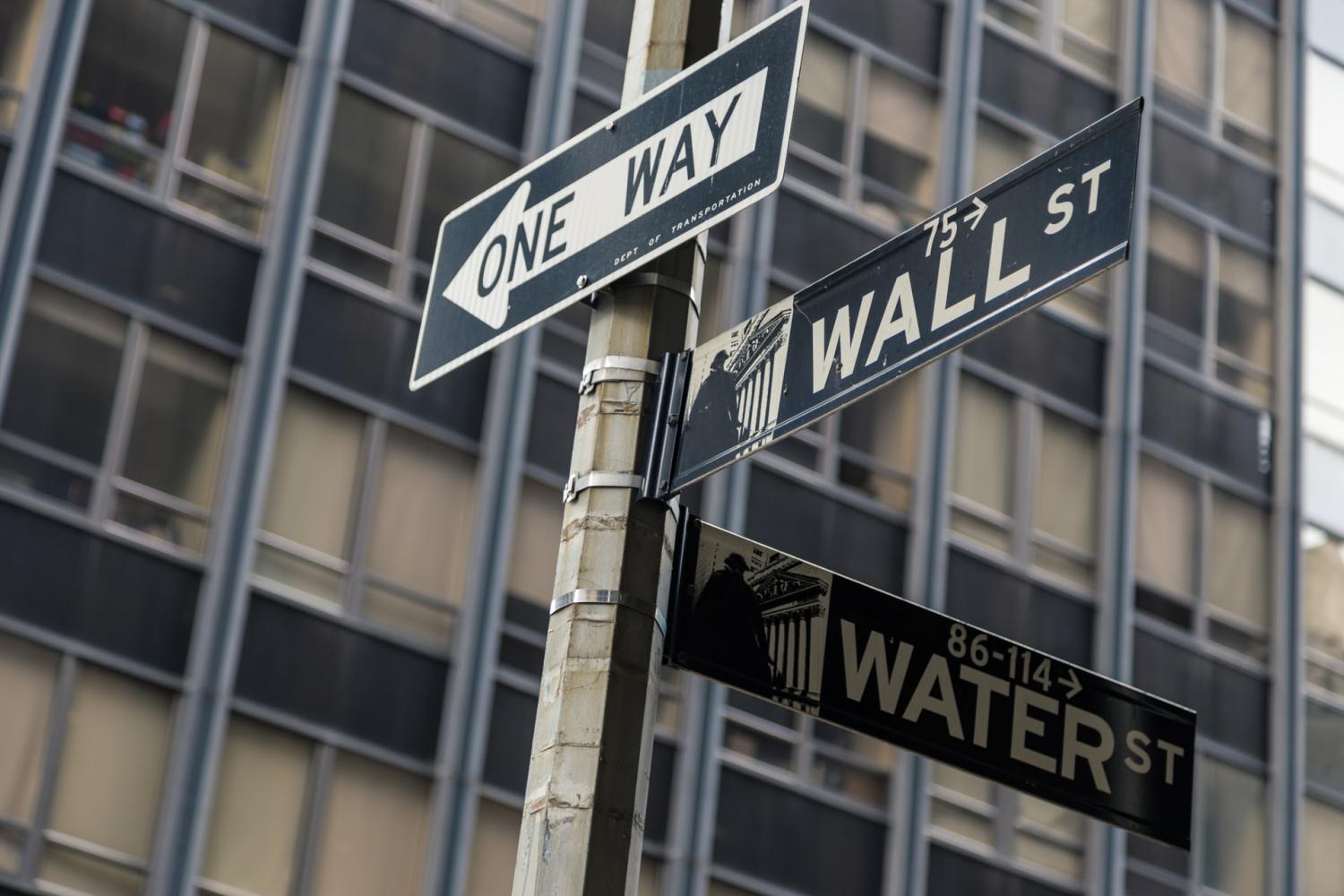
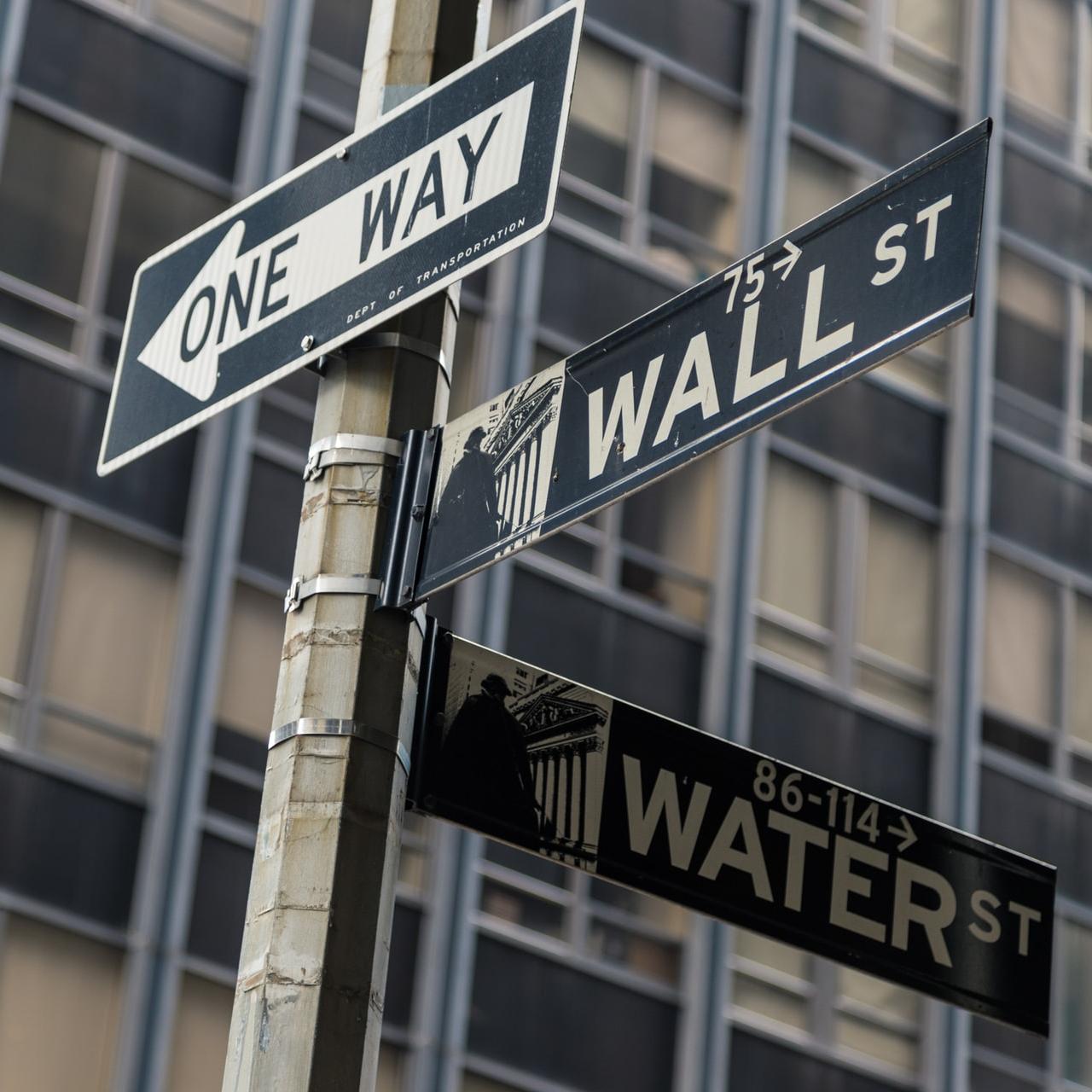
Before the COVID-19 crisis rocked the global economy, bottom-line evidence already suggested an increased interest in ESG-lens investing, or selecting portfolio companies based on environmental, social, and governance factors and reporting. The question is whether or not a strong ESG profile could help, or hurt, during a time of great upheaval. Financial advisors are already beginning to answer that — and all signs indicate the ESG movement will emerge from COVID-19 stronger and more influential than ever.
The potential for a sharp upturn in ESG investing may seem like a silver lining to a horrible tragedy, but it’s not. There is no silver lining to a lethal infectious disease outbreak that has shattered lives and wrecked economies all around the world.
Think of ESG investing as a recovery strategy, and the future of the global economy comes into sharper focus.
ESG funds are still outperforming conventional stocks
In the not too distant past, ESG goals were perceived as window dressing. More recently, ESG reporting has been recognized as a strategy that exercises a positive financial influence over operations, and improves the prospects for sustainable growth.
Recent events continue to provide support for ESG investing.
On January 29, with the U.S. financial markets still operating in overdrive, Bloomberg reported that ESG funds were outperforming the Standard & Poor (S&P) 500.
By mid-March, global financial markets had plummeted. ESG funds were not spared, but they were holding firm compared to the S&P 500 overall.
According to a March 13 analysis by Bloomberg, ESG funds fell an average of 12.2 percent for the year, while the S&P fell more than 24 percent.
The March 13 numbers also reveal just how mainstream the ESG movement has become. Among the ESG funds experiencing the highest growth are two older, experienced funds that enjoyed 40 percent growth, thanks to a hefty share of health, pharmaceutical and technology company equities in their portfolios.
ESG investing as a recovery tool
The relatively strong performance of ESG funds during the COVID-19 crisis is all but certainly sparking interest among conventional investors. Indeed, financial advisors are already citing COVID-19 recovery as an incentive to invest in ESG funds.
For example, last week Barclays announced the addition of an ESG assessment and indicators to its Fundamental Research arm.
In a March 24 press statement, Jeff Meli, global head of research for Barclays, noted that sustainability concerns were already beginning to go mainstream before the COVID-19 crisis, and he outlined how ESG analysis can impact the COVID-19 recovery effort on a broad basis.
Barclays' new research initiative, he explained, will help sort out the impact of COVID-19. One outcome (and the most likely one), is a “greater sense of urgency and responsibility toward everything from consumer behavior to climate change, supply-chain practices and the future of work and mobility – and potentially alter the nature of the investment process as a result,” Meli said.
The future will be more sustainable
Another powerful endorsement for ESG-lens investing occurred on March 27 through Nigel Green, founder and CEO of the global financial consultancy deVere Group. In a press statement, Green outlined three key reasons to expect a “skyward surge” in ESG investing.
First, as many others have noted, Green emphasized that ESG funds had amassed a strong bottom-line track record before the outbreak, and they have continued to overperform relative to conventional funds.
Second, Green insists the COVID-19 outbreak has forced a reckoning among conventional investors who previously dismissed sustainability as a fundamental goal. The COVID-19 outbreak, he observed, “has underscored the complexity and interconnectedness of our world in terms of demand and supply, in trade and commerce — and how these can be under threat if not sustainable.”
Green concluded by drawing attention to a third factor: the influence of millennial investors. “Millennials — those who were born in the time period ranging from the early 1980s to the mid-1990s and early 2000s — cite ESG investing as their top priority when considering investment opportunities,” he said.
The millennial investor trend has been widely recognized as a powerful force in the ESG movement, and the fallout from COVID-19 virtually guarantees that it will be unstoppable.
Image credit: Uwe Conrad/Unsplash
Mobile Technology: The Key to Combating Climate Change
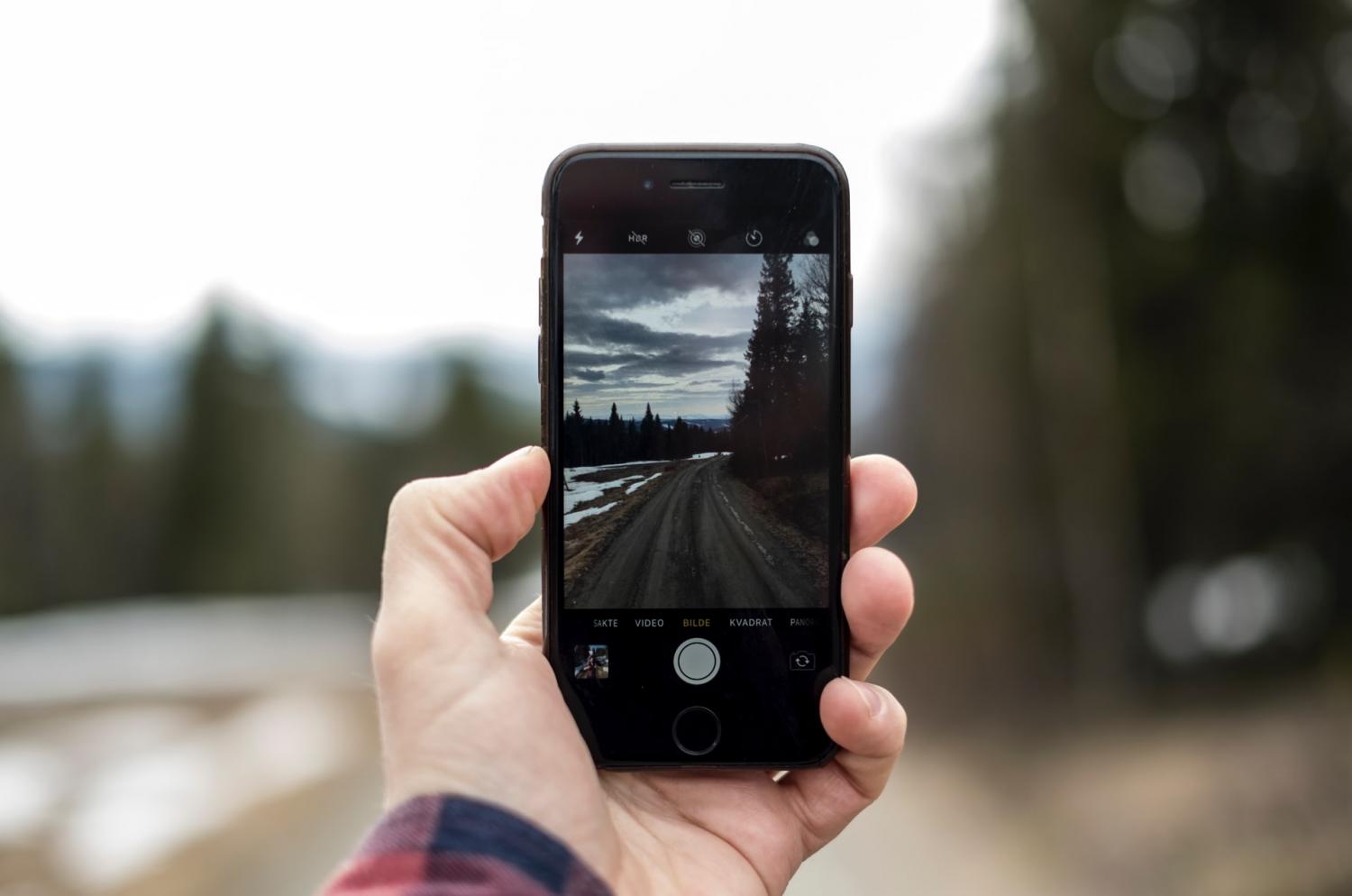
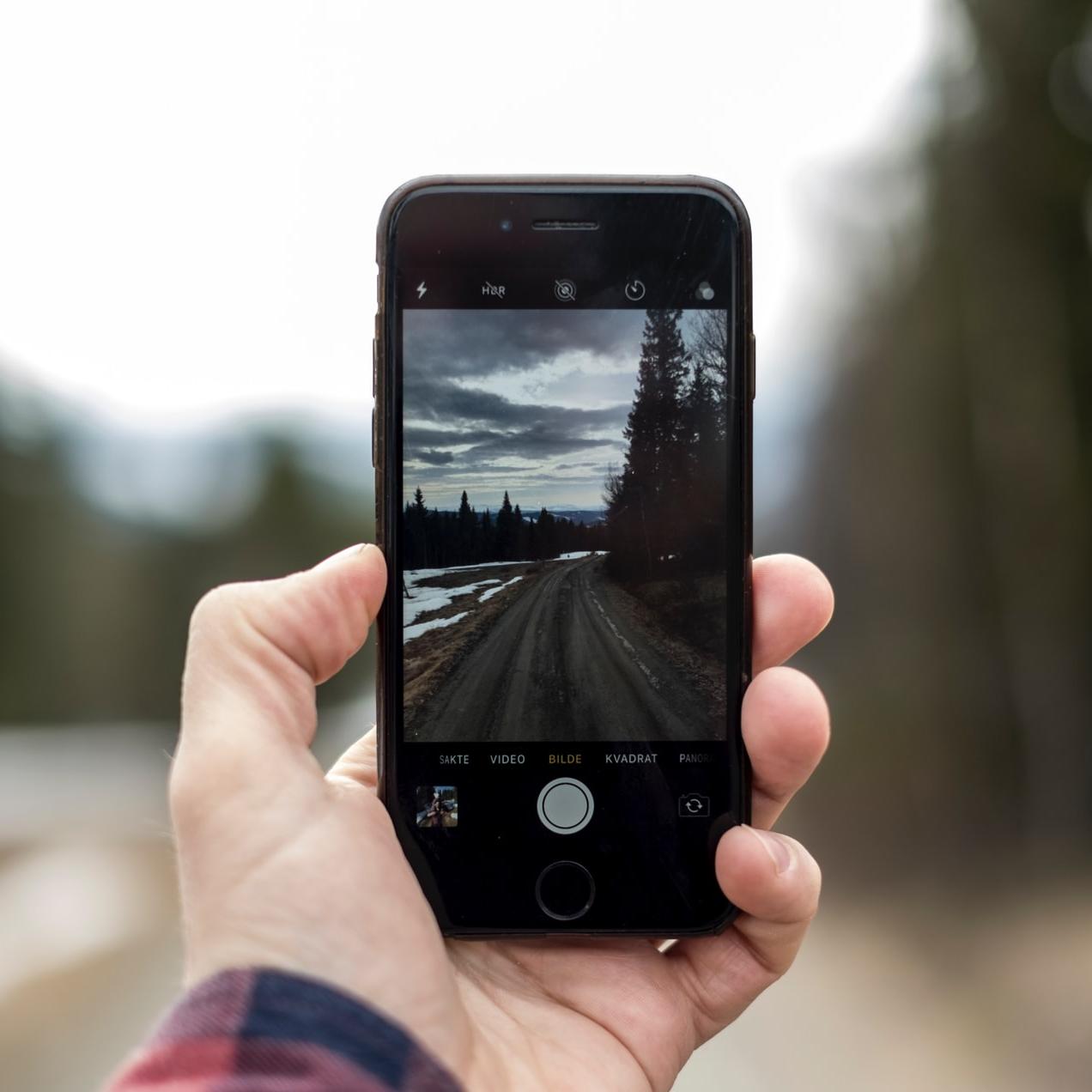
The current global pandemic crisis notwithstanding, climate change is still one of the most pressing issues of our time, an urgent need that demands dramatic action to ward off catastrophe. Without a plan in place and proper confrontation of this issue, we could face famine, extreme weather and the mass displacement of people around the globe. It can seem like an insurmountable problem, but one possible solution comes from what may, on the surface, seem like an unlikely source – the mobile technology sector.
The mobile technology industry has taken steps to look inward, creating more efficient equipment and supporting green initiatives. However, the real impact will come from the advances mobile technologies can enable energy efficiency in other industries.
Mobile technology and the enablement effect
At the GSMA, we call this “the enablement effect,” and it may be the key to helping us reach the emissions goals needed to combat catastrophic climate change. GSMA commissioned a report that outlines how mobile communications technologies can have a positive impact on carbon emission reductions, showing how far we’ve come and how much we still need to do.
Mobile technologies currently connect over five billion people around the world – about two-thirds of the global population. There’s incredible potential in those numbers. And the sector has already started to make a difference. In 2018, mobile communications technologies enabled a decrease in 1.44 billion MWh of electricity and gas, globally. These totals would be enough electricity and gas to power more than 70 million houses for an entire year in the U.S.
The explosion of IoT also holds a tremendous potential. Improved connectivity, hyper-responsive sensors and the rapid processing of data can jumpstart energy efficiency initiatives across a broad range of industries. As more devices come online and networks become faster and more responsive, there will be more ability to monitor energy usage, temperature, lighting and other operations in real-time.
When you look at the potential impact of mobile communications technologies compared to the footprint of the industry itself, there’s a possibility of a tenfold impact.
Mobile technology’s impact across industries
The impact of the enablement effect can be brought to bear on nearly any industry, but the most immediate effects will be on industries with potential for automation and coordination across widely-spread operations, such as healthcare, agriculture, manufacturing and transport.
For example, mobile technology will be a catalyst for the increase in electric vehicles by facilitating the use of charging points. Through telematics, this utilization of the IoT will also create an improvement in route optimization and vehicle fuel efficiency. As an example, the Neste SmartTruck service allows truck drivers to access applications like mobile refueling, fuel consumption optimization, GPS positioning and other data. The system helps fleet managers save up to 15 percent of a vehicle’s fuel consumption, reducing emissions.
Another example is the energy field. As more renewable sources are added to the energy grid, mobile technology is helping companies monitor wind power farms and solar power installations to ensure they are producing clean energy at the most opportune times.
Enabled by mobile, smart grids are also revolutionizing the energy distribution process. By utilizing IoT technology, energy demand and transmission can be carefully tracked. This improves coordination and distribution efficiency, increasing the stability and resilience of the system, while decreasing its cost and environmental impact.
A disruptor and conduit that can make a difference in taking on climate change
Digitization is expected to disrupt all parts of the economy over the next decade and, if sufficient policy and investment is received, has the potential to be a key driver of low carbon development.
The mobile industry enabled a reduction of over 2,000 million tons of CO2 in 2018 alone. This is almost ten times greater than the total CO2 emissions of the mobile networks globally. This is a great start, but the progress can’t stop there.
According to the UN, we need to cut emissions by half 2030 to limit global overheating to 1.5 degrees Celsius, the target outlined by the Paris Agreement. And we have just around 10 years left to make the massive structural and societal changes necessary to make that happen.
To get to that goal and avert climate disaster, governments, corporations and consumers must embrace the opportunities presented by mobile technologies to raise energy efficiencies across sectors and start to halt climate change.
Image credit: Fredrik Solli Wandem/Unsplash
EPA Relaxes Automobile Efficiency Standards Through 2026
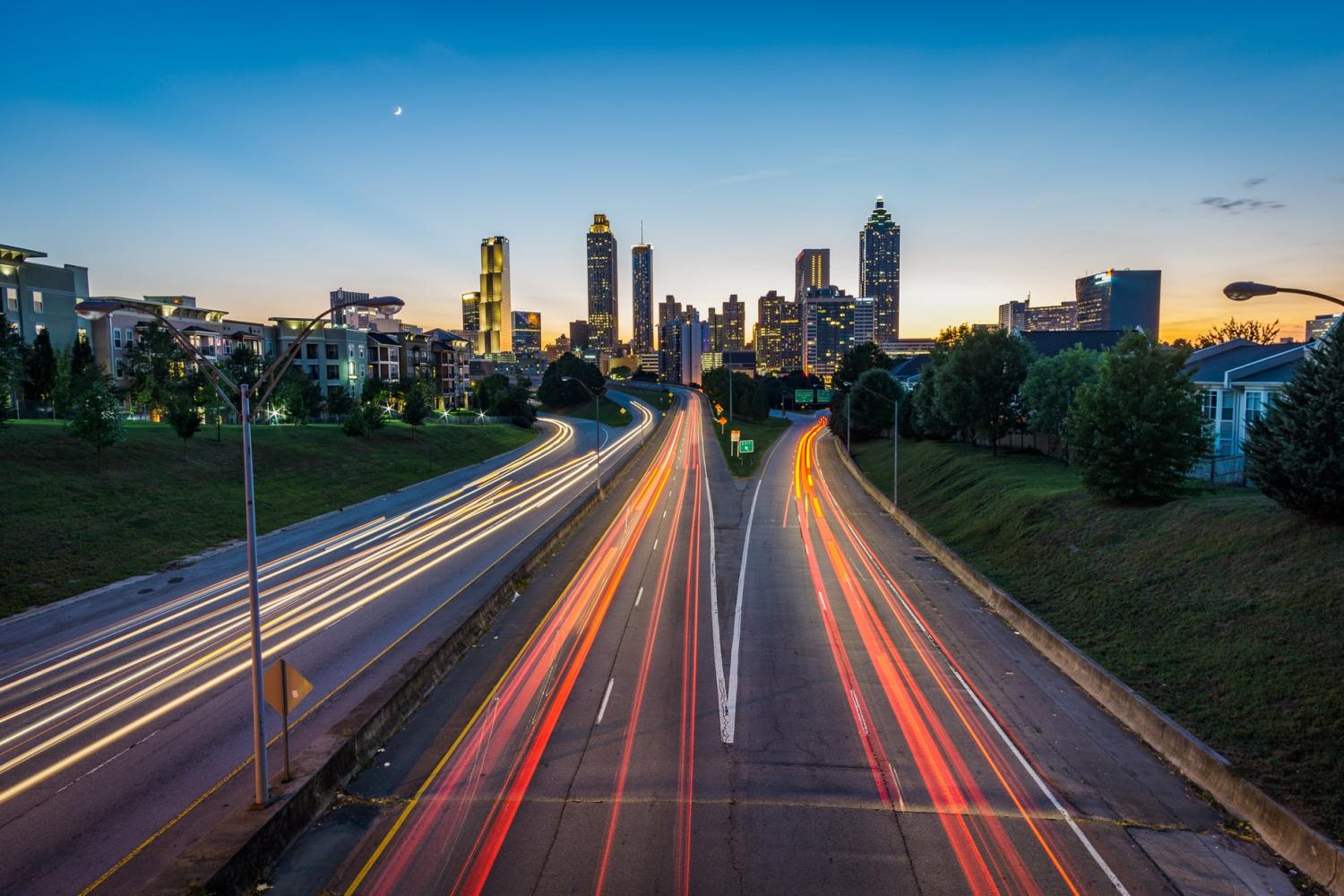
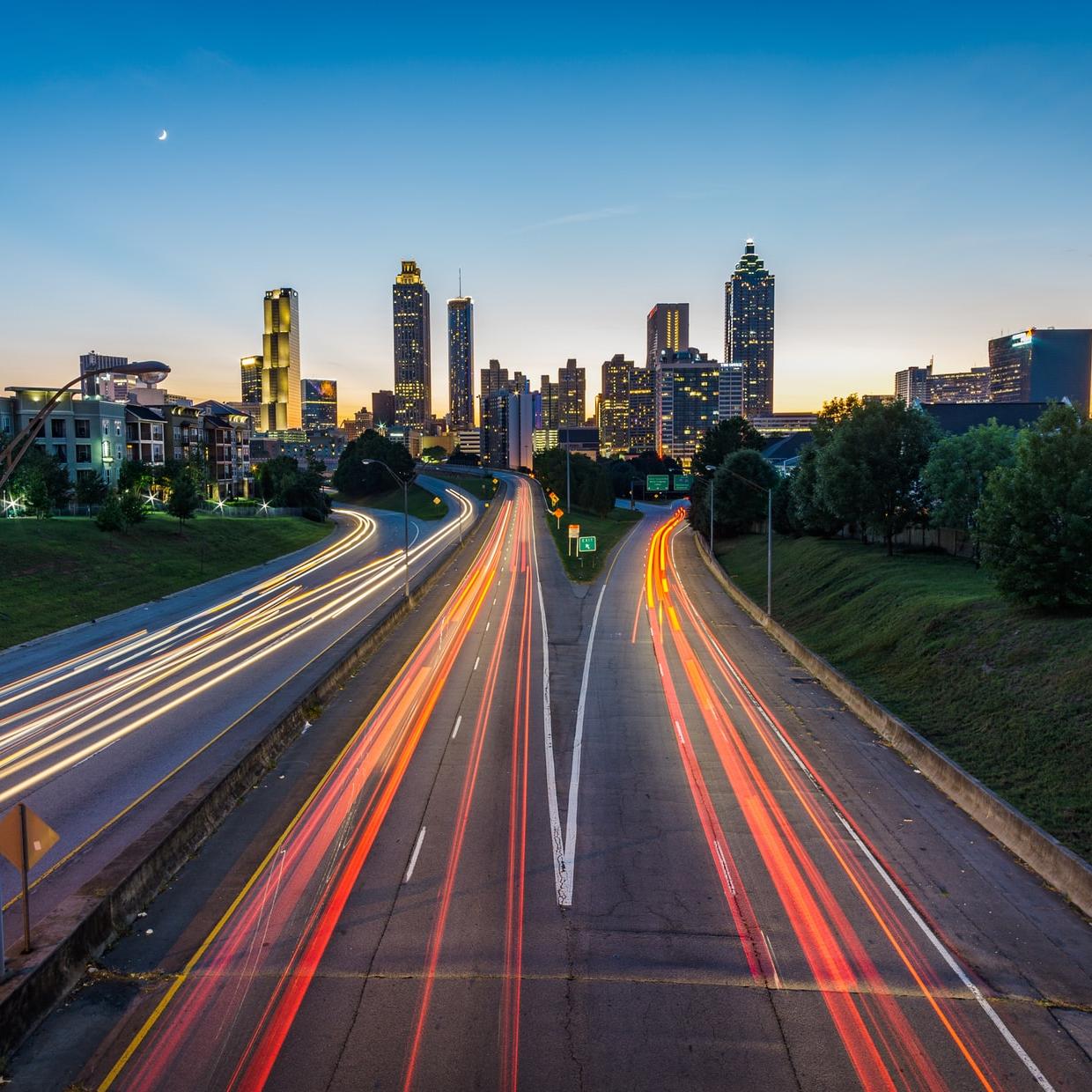
With all the turmoil going on in the world today and everyone’s attention diverted by the global pandemic, the Environmental Protection Agency (EPA) and The National Highway Traffic Safety Administration (NHTSA) once again slipped through a ruling this week that imposes less demands on the U.S. transportation sector.
The final ruling of the Safer Affordable Fuel-Efficient (SAFE) Vehicles Rule for Model Years 2021-2026 Passenger Cars and Light Trucks was signed on March 30. This ruling undermines the vehicle fuel efficiency requirements through model year 2026 that the Obama administration had established.
A rollback on mileage standards
While the existing rules demand a 5 percent boost in annual fuel efficiency for manufacturers’ fleet averages, the new rule instead relaxes this to 1.5 percent. In effect, as reported by the San Francisco Chronicle, the result is that by 2026, cars will only have to achieve on average 40 miles per gallon (MPG) as opposed to closer to 50 MPG under the existing rule.
The Obama administration established these fuel efficiency goals to align federal standards with California’s stricter ones. California has always had a waiver to the EPA’s Clean Air Act, allowing the state to set its own, more stringent targets. In part, this policy aimed to satisfy auto manufacturers' desire for a single fuel efficiency standard across the country rather than having to meet a patchwork of different ones state by state.
With the EPA’s new rule, the current administration advances its strategy to rollback efficiency standards in a two-pronged attack. First, the Trump administration announced in September 2019 its intent to withdraw California’s Clean Air Act waiver. Now, it is following up with looser federal fuel efficiency standards to be imposed nationwide.
California pushes back against the EPA
California, along with 22 other states, is fighting the Trump administration in court over the removal of the waiver, claiming that similar waivers have never been revoked in the past and that the Clean Air Act, in any case, provides no process for doing so. Ken Kimmel, President of the Union of Concerned Scientists said last year, “It’s yet another way the administration is defying science, the law, and democratic norms to enable increased pollution.”
Indeed, according to the Chronicle, more than one billion metric tons of carbon emissions will result from cars that automakers would manufacture under the more relaxed new standards, citing an analysis of models undertaken by the Climate Law Institute’s Maya Golden.
Nevertheless, the EPA claims it’s pursuing the new standard in the interest of consumers. The agency’s premise is that meeting existing fuel efficiency targets would be too expensive due to increased technology costs. Relaxing them, as the EPA says in their final rule document, would save automakers between $86 billion and $126 billion over the lifetime of vehicles through model year 2029, and consumers would pay between $977 and $1,023 less per vehicle.
Still, what consumers might save on the dealer forecourt, they’ll spend at the pumps - in all likelihood completely offsetting any increased cost of a more efficient vehicle. The Sierra Club asserts:
“Preliminary analysis indicates that the rollback would increase fuel costs by more than $240 billion; result in 18,555 premature deaths; produce 1.5 billion metric tons of climate pollution (comparable to the pollution emitted by 68 coal plants operating for 5 years); and contribute to one million lost work days.”
The rollback in fuel standards has been in the pipeline since 2017, almost from the advent of the Trump administration. This shift in policy stems in part from a request from auto manufacturers who were lobbying for a relaxation of the EPA’s targets as they deemed them overly expensive to meet.
Automakers now face confusion
But whereas under the Obama EPA’s rules, car makers were ensured a consistent standard to meet across the country, instead they now face uncertainty as to whether the new, or the old rule will stand, as the new rule will doubtless face legal challenges. Furthermore, the EPA’s ruling leaves them all in limbo as they proceed with their 2022 fleets and beyond.
The EPA’s decision has also left a divided automobile industry.
Ford, Honda, BMW and Volkswagen have pushed for tighter standards and have agreed to meet California’s goals, while other major automakers have sided with the Trump administration, no doubt preferring some leeway to produce larger, less efficient vehicles.
Plug In America sees the EPA’s new rule as a blow to electrification, asserting that tighter fuel economy standards send a stronger signal to consumers to adopt EV’s. Furthermore, from Plug In America’s point of view, introducing the new rule now is tone deaf. “At a time when we are experiencing a global health crisis, we should not be weakening fuel efficiency standards and adding more pollution to the air we breathe,” said Plug In America’s executive director Joel Levin.
Of course, the matter will now head to the courts and the EPA may face shaky ground there. The Chronicle quoted Julia Stein, environmental law professor at the UCLA School of Law, who said: “the administration has really struggled to provide an adequate basis to roll back the Obama-era standards.”
The EPA’s head, Andrew Wheeler, says the new rule will save lives and money. Wheeler’s “saving lives” argument is based on the tenuous claim that consumers won’t be able to afford a new car under the existing Obama-era rules, and therefore will drive older vehicles. That assumption, however, is hard for the EPA to substantiate.
In the meantime, auto manufacturers can circumvent the uncertainty they face by simply adopting the stricter standards. They can also look at cues visible in other countries where demands for zero emissions vehicles are growing, such as in the United Kingdom, which plans to phase out all fossil fuel powered cars by 2035. The auto industry is, after all, a global one - and if the automakers want to compete globally, they’ll need to invest in new technology anyway.
Image credit: Joey Kyber/Unsplash
These CEOs Gave Up Their Salaries As the Pandemic Causes More Job Losses

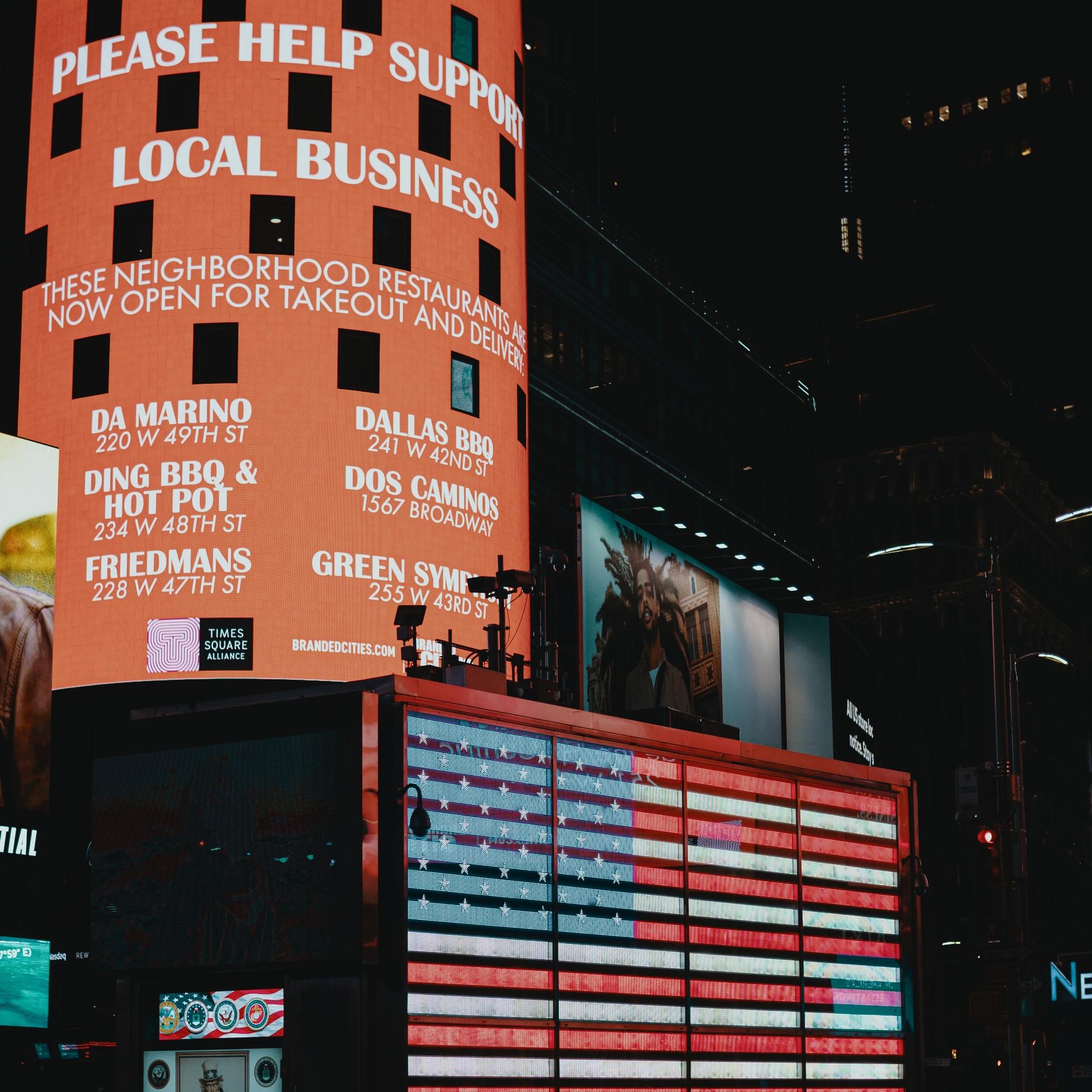
In an op-ed on MarketWatch earlier this week, a pair of academics argued that business leaders need to do more in response to the novel coronavirus pandemic. “If CEOs wish to be faithful to their newly stated commitment to social responsibility, then as the highest paid in our economy, they should give up their salaries and stock-based compensation for 2020,” wrote Jennifer W. Kuan and Stephen F. Diamond.
That money, instead, could pay workers and help support communities that are struggling against this worsening pandemic. Further, Kuan and Diamond want to see these pledges scale up as such a pact could help pay for services many executives are asking the U.S. government to provide, such as childcare, healthcare and paid sick leave. True, salary is often a sliver of these executives’ compensation after stocks and other benefits. Nevertheless, such promises send a message to workers, many of whom feel as if they were thrown under the bus at a time when they need a paycheck the most.
Considering the pay gap between top executives and frontline employees, which has widened exponentially over the past half-century, such a gesture would yield significant returns. First, it would speak to America’s culture of generosity, amplified even more at a time of need. Such a pact would also drive a sense of urgency that everyone is together in this fight as citizens hunker down during the pandemic. And it would send a signal that the Business Roundtable’s revised “Statement on the Purpose of a Corporation” is not spin, but a true commitment to people and their communities.
You’re probably aware of the airline and hotel CEOs who have cut back all or some of their salaries to bolster their companies against coronavirus shutdowns. Here is a sampling of some other business leaders forgoing salary for the time being:
Disney Chairman Bob Iger, who recently stepped down as CEO, announced he will stop accepting his salary for the foreseeable future.
CEO Ed Stack and President Lauren Hobart of Dick’s Sporting Goods said they are receiving no salary as of March 29.
W. Kent Taylor, CEO of Texas Roadhouse, decided to stop receiving pay until early 2021 to help employees affected by the economic downturn.
Tom Boyle, CEO of Columbia Sportswear, cut his salary from $3.3 million to $10,000.
And Gravity Payments CEO Dan Price, who five years ago made headlines by slashing his pay while guaranteeing a $70,000 salary for all company employees, cut his $70K annual paycheck to zero.
From our weekly Brands Taking Stands newsletter - be sure to subscribe!
Finally, A Bottom-Line Pushback Against Racism Triggered by the Coronavirus


The U.S. business community has had plenty of practice pushing back against racism during the Trump administration. The ongoing barrage against minorities and immigrants began during the run up to the 2016 election and continued into 2017, when the president issued his infamous “Muslim ban." There has been no letup since then. In the latest iteration, the president has insisted on calling the novel coronavirus the “Chinese virus”, even as reports of anti-Asian discrimination and physical violence rises.
So far, the U.S. business community has failed to organize against the president’s slurs linked to the coronavirus outbreak. However, if and when they finally decide to step up and push back, they might get help from an unexpected quarter.
Fighting back against racism triggered by coronavirus
Adweek has been taking note of the bottom line impact on businesses seeking to court Asian consumers. In an article earlier this week, reporter Mary Emily O’Hara summed up the bottom line motivation for businesses to act more aggressively on anti-Asian racism.
“Brands are missing out on support from a major global—and notoriously loyal—consumer base,” O’Hara wrote.
One company taking action is the multicultural agency IW Group, which created the #WashTheHate social media campaign.
The campaign combines a key infection-fighting action with public engagement. It asks people to circulate videos of themselves washing their hands and sharing personal stories about their experiences during the coronavirus outbreak.
In recognition of the 20-second recommended washing time for killing the virus, #WashTheHate asks for videos of at least 20 seconds long.
Where are the business leaders?
So far, #WashTheHate has recruited substantial participation from individuals and organizations in the Asian community. Other Asian-lead efforts to track coronavirus-triggered hate crimes have also emerged.
However, as of this writing the U.S. business community has been silent.
The silence is particularly deafening from social media CEO’s, considering that their platforms continue to tolerate innumerable references to “Chinese virus” and other slurs.
Social media aside, business leaders may be reluctant to embark on a campaign to lecture the public about racism at a time when anxiety about catching a potentially lethal disease is running high.
However, there is at least one pathway for creating a conversation that could help tamp down the fire.
In 2015 the World Health Organization issued guidelines for naming diseases, to avoid racism and xenophobia.
The WHO guidelines have a social purpose, in that they aim to minimize “offense to any cultural, social, national, regional, professional or ethnic groups,” but they also have a clear bottom line intent.
That’s not all, however. The WHO guidelines also express a clear bottom line benefit for business. Aside from fostering a social good, they are designed to help avoid “unnecessary negative impact of disease names on trade, travel, tourism or animal welfare.”
With a clear dollars-and-cents motivation at hand, business leaders could insist, loudly and publicly, that the novel coronavirus be called by its proper name.
Help from an unexpected quarter
The likelihood of that happening dimmed significantly last week, when multiple reports surfaced that the President’s Secretary of State, Mike Pompeo, held up a G7 joint statement on COVID-19 over naming the virus.
According to the reports, Pompeo insisted that the statement refer to COVID-19 with another slur referencing China, the “Wuhan virus."
The Trump administration’s insistence on using an anti-Asian slur at the highest level of national policy has made it all the more difficult for CEOs to exercise their voices.
Nevertheless, a solution may be forthcoming from the businessman-in-chief himself, Donald J. Trump.
Earlier this week the Daily Beast reported that Trump, and the State Department, suddenly began softening the anti-Asian message following several flattering conversations with Chinese leader Xi Jinping.
In particular, Daily Beast reporters Asawin Suebsaeng and Erin Banco note that State Department had been routinely referring to COVID-19 in official cables as the “Wuhan virus,” even going so far as to use the anti-Asian slur in official talking points guidance. However, more recently the State Department seems to have dropped that name from official correspondence, in favor of COVID-19.
They cite a senior Trump official who stated that “There’s an understanding that the department —and the administration as a whole—is going to back away from that terminology.”
Others have noted that the president is especially receptive to flattery. Trump himself indicated as recently as this week, when he raised the issue of appreciation.
So, it’s within the realm of possibility that Xi Jinping used the flattery tack to persuade the President to turn the anti-Asian ship around.
If flattery is an effective carrot, there may also be a stick involved.
After all, the network of Trump family businesses has an interest in maintaining friendly ties with China. For example, in 2018 top Trump advisor, daughter and businesswoman Ivanka Trump won a flurry of Chinese trademarks for her eponymous fashion brand through the company Ivanka Trump Marks LLC.
Trademarks granted to the firm reportedly include Ivanka-branded accessories and beauty services, among others.
Either way — carrot or stick — at least someone has the President’s ear on the importance of calling COVID-19 by its name.
Xi Jinping aside, though, the damage has already been done. Undoing it will take more than a phone call, and there is much work to be done if and when U.S. business leaders finally decide to act on anti-Asian racism.
Image credit: Unsplash
Employee Activists Test Employers on COVID-19 Rights
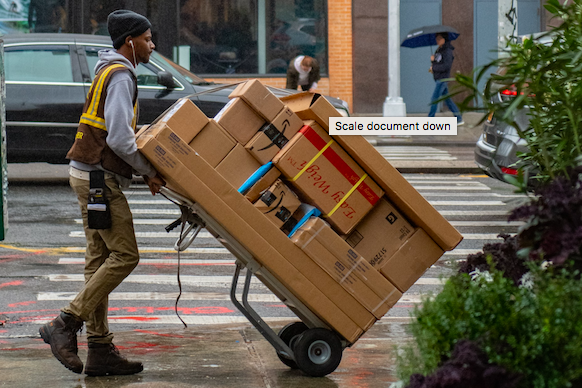
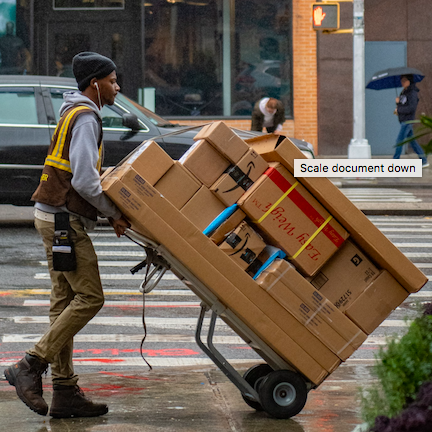
Even as the death toll from the COVID-19 outbreak mounts, millions of ordinary U.S. workers have continued reporting for duty. Their companies call them “heroes” for bringing the necessities of daily life — food, medicine, and of course, toilet paper — to the public, regardless of any stay-at-home orders.
However, calling someone a hero and treating them as such are two different things. Employee activists are now calling companies to account for failing to walk the corporate social responsibility walk in a situation where simply showing up for work is a life-threatening proposition.
COVID-19 reveals cracks in the CSR façade
The COVID-19 crisis has exposed two major cracks in corporate social responsibility (CSR) and employee relations.
One problem has to do with shortcomings in policies regarding paid or unpaid sick leave and furloughs, as well as layoffs. The lack of financial protection for workers disrupted by the COVID-19 outbreak is especially acute among companies that rely heavily on gig workers and part-time employees.
The other problem has with workers who are required to report to their jobs in order to receive compensation.
In effect, the “lockdown” response to COVID-19 acknowledges that millions of ordinary workers are entering a potentially life-threatening environment every time they go to their job, with little if any training in biohazards and personal protection, and without a ready supply of appropriate protective gear.
That kind of training is routine in emergency response, health care and various fields involving industry and science. It is practically foreign territory, though, among the thousands of supermarkets, warehouses and delivery systems sprawling across the U.S.
Employee activists speak out - and walk out
Some CEOs have offered to close the financial gap by redirecting their salaries to financial relief for workers, including Yum! Brands CEO David Gibbs.
That leaves the pressing issue of employees who are still reporting to work in potentially unsafe conditions.
Workers at Instacart, for example, have turned the media spotlight onto the issue of worker safety with a strike on Monday, citing a lack of hand sanitizer among other basic precautions.
A number of Amazon workers at a warehouse in Staten Island also walked off the job on Monday, calling for hazard pay and protective equipment.
In addition, workers at Amazon-owned Whole Foods have been organizing a sickout scheduled for Tuesday. The sickout was expected to be the largest worker action of its kind in the 39-year history of Whole Foods (note: Whole Foods was acquired by Amazon in 2017).
Reuters also reported scattered worker walkouts or boycotts by employees at the North Carolina locations of McDonald’s, Walmart, Harris Teeter, Waffle House, Family Dollar and Food Lion last Friday.
Falling down on employee protections under COVID-19
All of this is a particularly bad look for Amazon. The company established a worker relief fund with $25 million in seed money, but in the glare of the media spotlight that seems like a mere pittance, considering that Amazon’s founder, CEO and President is widely considered the richest man in the world.
Adding fuel to the media fire, the relief fund’s online landing page initially appeared to solicit additional money from the general public.
Even more fuel was piled on earlier this week, when Amazon reportedly fired an employee activist, sparking interest from New York State Attorney General Letitia James for a possible violation of labor law.
Stepping up on ensuring worker protection
CEOs are hardly alone in their failure to plan ahead for the COVID-19 crisis.
A catastrophic failure on COVID-19 preparation by the Trump administration laid the groundwork for misdirection on a history-making scale, leaving state and local governments to respond with a patchwork of actions that have yet to coalesce around a clear and consistent national strategy.
Nevertheless, the ball has been dropped, and now is the time for CEOs to demonstrate just how serious they really are about their employees and safety – and in the long run, their true commitment to corporate social responsibility.
Image credit: Wynand van Poortvliet/Unsplash
5 Steps to Reimagine Capitalism in a Changing World
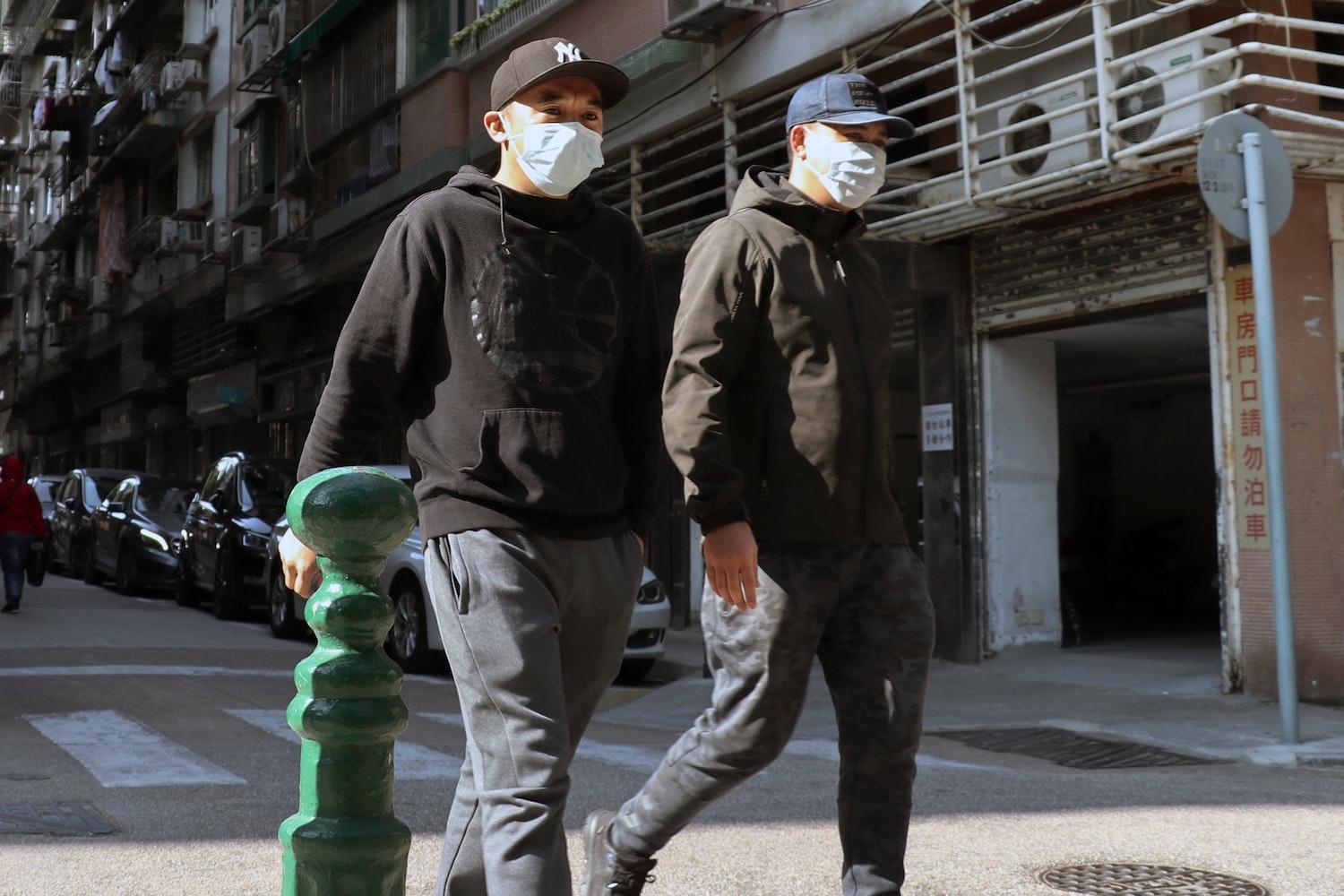
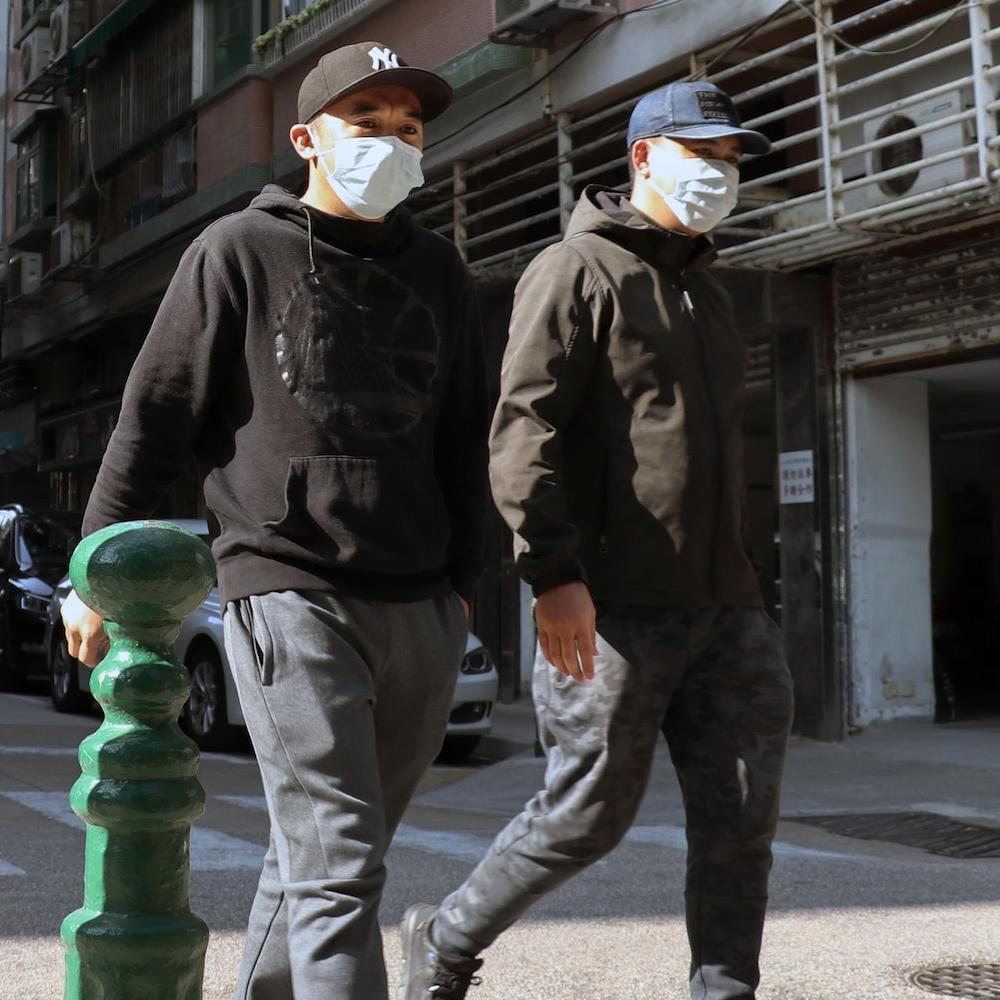
The novel coronavirus pandemic "makes clearer than ever that the social contract in many places is not fit for purpose and needs to be reformed," observed Aron Cramer, president and CEO of the responsible business coalition BSR, earlier this month. As we see the shortcomings in how business, government and civil society work together to meet people's needs when it counts the most, now is an ideal time to think about how we can reimagine capitalism to function in a way that's constructive, not extractive.
At the Ceres 2020 conference last week, which was moved online in response to the pandemic, Harvard Business School professor Rebecca Henderson unpacked how business can be the driving force behind this very change.
"I'm a huge fan of capitalism," said Henderson, who teaches Reimagining Capitalism in Harvard's MBA Program and explores how organizations respond to large-scale technological shifts as a research fellow at the National Bureau of Economic Research. "But at the moment, our system is wildly out of bounds."
"We've created a capitalism in which firms can privatize the profits and socialize the risks, in which it's quite legal to throw greenhouse gases out the window in nearly every jurisdiction on the planet, to dump plastic into the ocean, to treat employees as disposable objects, and to take most of the returns for oneself. And that is not an acceptable outcome going forward," she continued.
So, what can be done? Henderson laid out a five-step action plan for businesses to drive positive change in capitalist systems, suggesting "the best place to act and to reimagine capitalism might be business itself." Read on for her insights.
1. Double down on shared value
Coined by Michael Porter and Mark Kramer in their 2011 Harvard Business Review article of the same name, shared value refers to business models that turn a profit while still creating value for all stakeholders, including employees, customers and communities, as well as the environment. And it's the first step in Henderson's five-point plan to reimagine capitalism.
"That's clearly not enough to solve the problems we face, but it's hugely important in many cases," she insisted. "It can drive the transformation of entire industries."
2. Embrace pre-competitive, multi-stakeholder collaboration
To have any measurable affect on the way we reimagine capitalism, efforts to drive shared value must scale up. That means building strong, multi-stakeholder collaboration around pressing global challenges that "can only be addressed at the industry level," Henderson advised. "Let's make them pre-competitive. Let's all agree not to throw greenhouse gases out the window. Let's all agree not to throw our waste into the river. None of us will suffer if we all agree, and our reputations and the health of our long-term supply chains will be preserved."
She cited multi-stakeholder efforts to improve the sustainable sourcing of ingredients like palm oil, beef and soy as examples of pre-competitive collaboration in action. "Like the first one, it's clearly not enough," she continued. "But these kinds of collaborations create enormous information about what works, and they create a constituency of firms that says, ‘We're still committed to moving forward.’"
3. Rewire finance
"The third step is rewiring finance and moving money to back those firms that are creating shared value, that are cooperating with each other to insist that the entire economic system decarbonize and that firms find ways to treat their employees in more sustainable and just ways," Henderson said.
"This is a movement …. that’s already well underway," she insisted. Indeed, a record $21.4 billion in new money flowed into sustainable and socially responsible investment funds last year, a fourfold increase from 2018. "The idea that longterm investors with very large portfolios cannot diversify away from the risk of catastrophic climate change or the death of the ocean is, I think, a profound realization that's going to yield all kinds of fruits over the next few years."
4. Build inclusive institutions
"Rewiring finance is tricky, however I fear it’s not enough," Henderson went on. "Without re-making our institutions, we will not solve the problems of environmental degradation and accelerating inequality. We need to build what development economists call inclusive institutions: a rule of law that’s really free and fair, a media that speaks the truth and is rooted in the science of democracy, in which everyone participates."
"This is a little controversial," she continued, "but business should play a role in getting us to that place." This perspective again overlaps with that of Cramer, who spearheaded BSR's effort "calling for a modernized social contract for the 21st century," including the ways in which business can serve to strengthen — rather than weaken — our institutions.
5. Believe in a higher purpose for business
Finally, to reimagine capitalism, "we need to believe," Henderson said firmly. "We need to act on the idea that the purpose of business is not maximizing shareholder value. Making money is a necessary means to an end, but the end is building strong and healthy societies."
No executive would proudly tout his company's use of child labor because it's profitable, she went on, but we can't yet say the same about other destructive practices that are tied to global businesses and their supply chains.
"We need to build a society in which it's not alright to emit carbon and do nothing to mitigate it. It's not alright to argue against legislation that increases taxes that will take care of education and healthcare. It's not okay to go along when governments suppress voters to maintain the influence of the powerful," she continued. "We need a major cultural and ideological shift."
Can COVID-19 help us reimagine capitalism?
We can already see this shift beginning to happen, Henderson continued. And now, amidst a pandemic that threatens widespread loss of human life and has brought the global economy to its knees, "we can imagine it in ways that perhaps six months ago made these five steps seem pretty remote," she told attendees at Ceres' virtual conference.
Through this lens, she insisted, COVID-19 gives us a reason to hope. "In the first place, it makes it very clear that bad things can happen," she said. "The power of business-as-usual has been so strong. We’ve been so prosperous and so happy that building the urgency about real change has been hard. Perhaps COVID-19 will help."
"Secondly, this epidemic demonstrates like nothing else can that we are immediately dependent on our community," she continued, becoming emotional and visibly choking back tears. "I can’t stay home and make money and trust that everything will be okay. We are clearly all interconnected. We clearly all have a responsibility to each other."
And any illusion that the free market alone is enough to provide us with a healthy, free and fair society is shattered by this crisis: "We need a functioning government and a functioning civil society that can work in partnership with firms to build the kind of world that is so eminently possible," Henderson said.
"Nothing is guaranteed, but everything is possible," she concluded. "We have the resources and the technology we need to address climate change, to address inequality and, yes, to contain this epidemic and build a just and sustainable society. All we need to do is find the time, energy and passion to act, and I know we have that. I know it can be done."
Image credit: Macau Photo Agency/Unsplash
Prisons and Surrounding Communities at Huge Risk to COVID-19
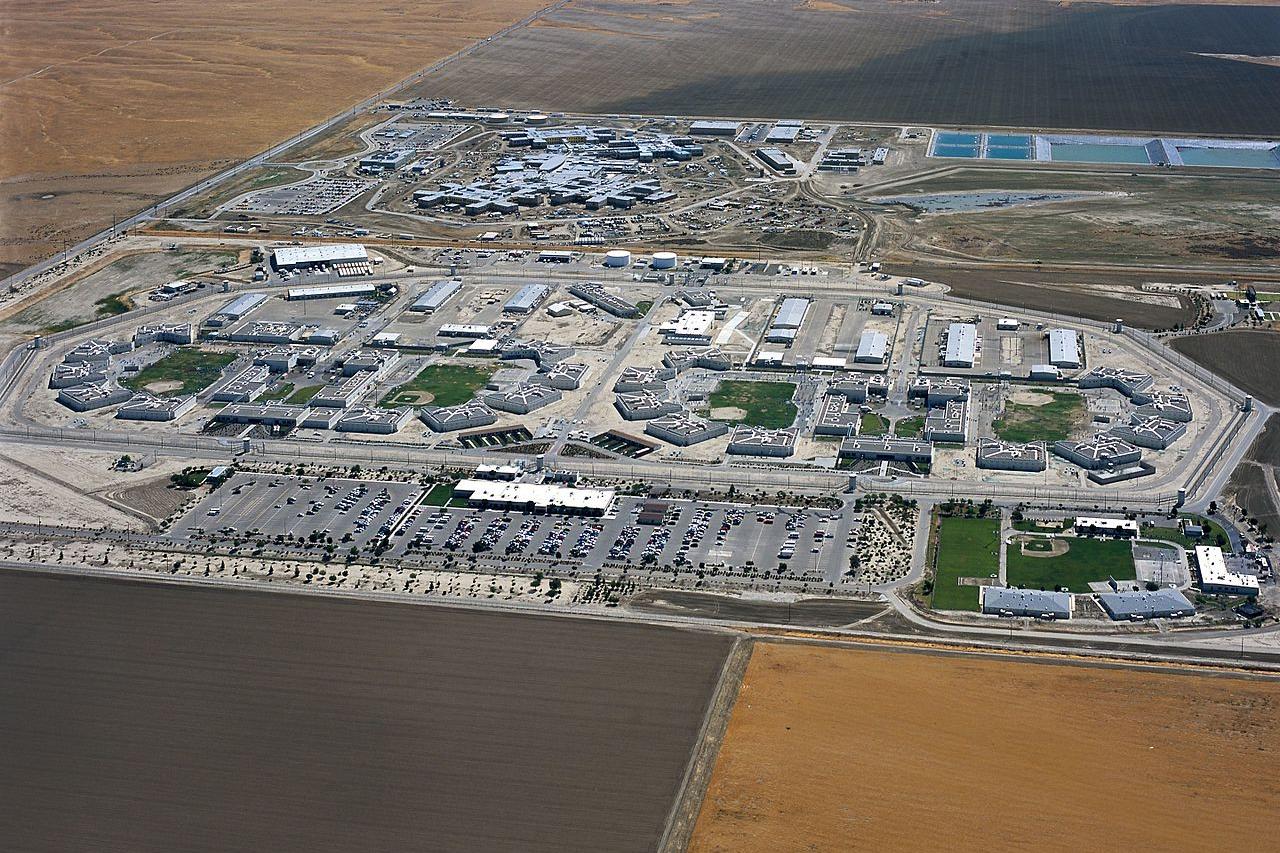
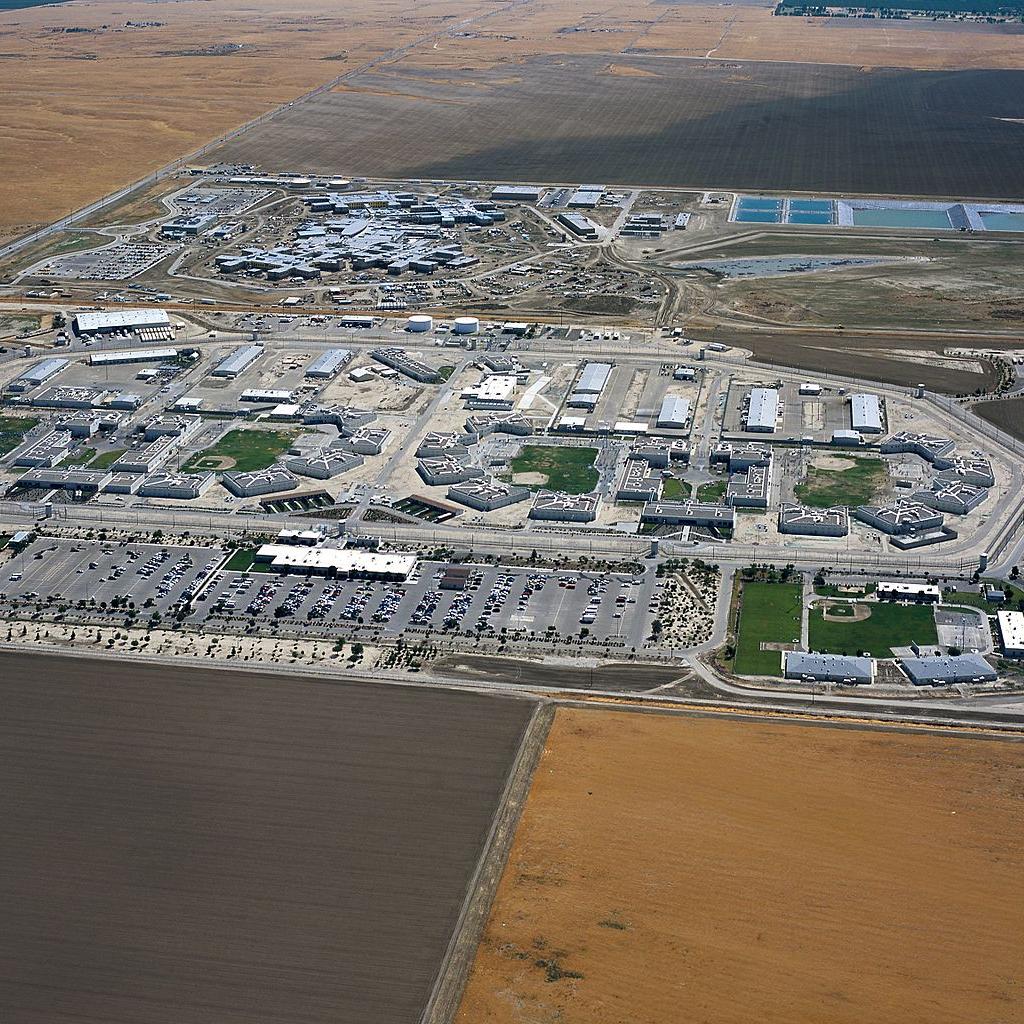
As the number of worldwide COVID-19 cases climbs toward the one million mark and politicians scramble to find solutions to curb the toll, there’s one place where an outbreak seems inevitable if the response remains negligent: jails. In the early stages of the virus, the nearly 2.3 million people incarcerated in 7,000 jails in the U.S. were largely left out of the equation, remaining an afterthought despite concerns that an outbreak could prove disastrous in such confined facilities. Furthermore, many of these prisons are located in rural areas, where healthcare services are often lacking – which leaves the communities and residents surrounding these prisons vulnerable in the event they become exposed to an outbreak.
Slowly, states are now stepping up to ensure the safety of their inmates and prison staffers, but there remains no nationwide protection or order to keep those behind bars out of harm’s way – including for the three leading private companies managing prisons across the U.S.
While more companies are extending their help in larger cities as a response to this pandemic, these remote areas in the U.S. are at risk of being forgotten and defenseless if COVID-19 cases surge.
More states are releasing prisoners early
To date, New Jersey has put forth the most sweeping inmate release plans, pledging to release as many as 1,000 people in an effort to contain the spread of the virus. Iowa has followed suit, promising to release around 700 inmates who were already considered eligible for release by the state’s parole board.
At a more local level, many counties, progressive and conservative alike, have taken matters into their own hands, releasing non-violent offenders who are deemed particularly vulnerable to the virus. Cuyahoga County in Ohio (Cleveland), Alameda County in California (San Francisco) and Washington County in Oregon (Portland) have released more than 1,200 inmates combined. Such releases free up space in the overcrowded prisons and jails, leaving inmates the ability to heed health officials’ warnings and more properly distance themselves from fellow offenders.
Of course, it’s great to see states and counties taking action to protect their inmates. But when we look at the big picture, it’s hard to ignore that a few thousand inmates granted early release is but a drop in the ocean of the 2.3 million prisoners still behind bars. And in a system synonymous with substandard medical care and overcrowding, there’s reason for concern.
COVID-19 is already hitting prisons, and that should worry you
The virus, in fact, has already reached correctional facilities. According to reporting from The New York Times, there were more than 350 cases confirmed between New York, California, Michigan, Alabama and a dozen other states. But beyond the lack of availability of tests that may be underreporting the numbers, fear of isolation and solitary confinement has prisoners hiding their symptoms, according to the AP.
New York City, which remains the epicenter of the virus in the United States, owns the highest clip of infected prisoners and staffers, with a combined nearly 250 testing positively for COVID-19. An estimate by a group petitioning New York’s Supreme Court said that the virus’s attack rate on the state’s infamous Rikers Island is 85 percent higher than that of the average U.S.
As Samantha Michaels of Mother Jones reported, the inmates in Rikers, the second largest correctional facility in the U.S., are on edge. Inmates have inadequate access to cleaning supplies like wipes and soap and sleep in overcrowded dorm-like cells with as many as 60 other men, making it near-impossible to social distance.
“The anxiety level is extreme,” Kenny, an inmate at Rikers told Michaels. “This feels like a death sentence.”
New York City, largely behind Mayor Bill de Blasio’s directive, has released 400 people in the city jail system, most of whom were scheduled for release in the next 90 days despite the crisis. But this remains far too few if officials intend to curtail the mass spread in hot spots like Rikers.
A letter dated March 21 from the NYC Board of Corrections urged the Mayor to “follow your colleagues...and take action now to release people from city jails.” The committee called for the immediate release of inmates older than 50 years old or those with underlying health conditions as well as those detained for administrative purposes or serving sentences under one year for low-level offenses.
The concerns extend beyond the state and local levels. At a national scale, 14 senators from both parties sent a letter to the Justice Department asking for the home release of inmates 60 years or older who have served two-thirds of their prison term. This request follows the guidelines set forth in the Elderly Home Detention Pilot, which was introduced as part of the First Step Act, the 2018 bipartisan criminal justice reform bill. Uptake and implementation of this pilot, however, has been slow from the Justice Department and Bureau of Prisons (BOP) as they’ve mounted fears that this early release pilot may include serious offenders.
The feds got the memo, but who will be released?
Attorney General William Barr on Thursday reacted with a two-page memo of his own, written to the Director of Bureau Prisons. “There are some at-risk inmates who are non-violent and pose minimal likelihood of recidivism and who might be safer serving their sentences in home confinement rather than in BOP facilities,” he wrote.
While it’s encouraging to see Barr request action, the Marshall Project notes that the policy set forth by Barr in the memo would disproportionately exclude black men from release. Inmates released would be those who score the lowest on the “risk assessment” algorithm named PATTERN - this algorithm deems white collar crimes “safer” than other crimes.
There’s no telling at this point how dire the inmate situation could become. We do know, however, that thousands of inmates living in tightly confined corners sharing cells, bathrooms, sinks, you name it, with limited access to proper cleaning supplies, healthcare and masks is a recipe for disaster.
Image credit: State of California/Wiki Commons
Truckers Keep on Trucking, Even During This Pandemic


As many Americans shelter in place at home to stop the novel coronavirus from spreading, truckers are still committed to keeping store shelves stocked during this pandemic. The canned foods people are buying to stock up their pantry shelves; the hand sanitizer people covet; even electronic equipment people are purchasing to stay connected for work and school are all on store shelves because a trucker drove to a store with pallets full of goods.
As truckers respond to the pandemic, they find most doors closed
And as truckers keep on trucking, they now find it hard to get a burger, use the restroom, stop to rest overnight or take a shower – all because many services vital to them are closed due to the shutdowns resulting from the COVID-19 pandemic.
As the numbers of COVID-19 cases increase and reports of deaths from the virus make the news, Americans are naturally afraid. Thomas Gennarelli, Vice President of TP Trucking and Transportation, told KTVL in Medford, Oregon, “People are just fearful of contracting (the virus), and what they’re going to interact with. Not knowing where that driver has been is what we've commonly heard.”
But truckers do not have time to feel fearful. They must keep the store shelves stocked. “While other businesses are closing, we will not, because the trucking industry is essential to all of our lives and health. We will continue to be here to support you, your companies and employees,” Paul Enos, CEO of Nevada Trucking Association told Channel Four News of Reno.
The truckers delivering goods we all need now drive longer hours and desperately need rest stops. CNN in one news outlet that has spoken with truckers across the country. One of them from Albuquerque, New Mexico, Ralph Garcia, said the traffic he experiences is “incredible.” Places where truckers usually park are packed, he said, and people “were lined up on the off-ramp, sleeping right there.” The reason, he added, is that they cannot gain access into that particular truck stop – a scene repeated across the U.S.
How Americans help out their trucker heroes
As truckers face the lack of things they need to keep going, their fellow Americans find ways to help them out. Garcia said that while at Burger King in Kingman, Arizona, he walked up to the drive-through window because his truck would not fit. Although the woman taking his order initially reminded him it was a drive-up, she took his order after he told her about his plight. “They didn't give me a hard time,” he said.
Ronda Aucoin drives a truck across the country. She told the same Reno television station that while she was in Nevada, people have brought her and her daughter a while when they were at truck stops. “Nevadans have been especially nice since a few places are closed and not allowing us to stay the night when we're done working,” she said.
More local businesses are stepping up to help truckers ensure they reach their final destinations during this ongoing pandemic. For example, TBS Factoring Service, a company in Oklahoma City, is currently providing truck drivers with bag lunches. The lunches contain submarine sandwiches, water, and chips. The company’s executives hold up signs near the highway to let truckers know about the free lunches.
CDL Life News, a trucking industry news service, featured social media posts about how the American public has been helping out truckers looking for a meal. Two stories in particular stand out. The police department in Eufaula, Alabama posted that it will help truckers find something to eat by either going and getting food or giving truckers “a ride to the nearest drive-through.” Lucky Steer Restaurant in Wapakoneta, Ohio has announced it will give truckers 40 percent off of their check total because “the country needs their help right now and we want to say thank you.”
The trucking industry has long been important to keep the American economy running. Or as the American Trucking Association (ATA) puts it, the country’s trucking industry “is the lifeblood of the U.S. economy.” Almost 71 percent of all freight tonnage in the country moves on truck beds. In other words, we need truckers and the goods they deliver to eat, shampoo our hair, and complete many other daily tasks. What Americans who help out truckers grasp is what the ATA said: “Without our industry, the American economy would grind to a halt.”
Indeed, it would, particularly during a time when so many other sectors of the American economy are on hold indefinitely.
Image credit: Matthew T Rader/Unsplash
How Companies Can Close the Gender Gap in Innovation


March marks an important month for women across the world. International Women’s Day and Women’s History month spearhead the celebration of all the women’s rights achievements. “An equal world is an enabled world” appears boldly as the title of this year’s International Women’s Day website, reminding us that despite the advancements, inequality is still a reality that undermines the true potential of our society. From an innovation perspective, as the world works to leverage technology to create a future where people, communities, and our planet thrive, gender equality and representation is crucial in driving our world’s innovation capacity. But here’s the reality: there’s a gender gap in innovation.
Technology plays a fundamental role in solving our world’s most pressing challenges. It has the power to address global issues, accelerate the economy and drive social development. Unlocking the true potential of technology requires diverse and inclusive innovation. Yet, currently, there is a significant gender gap when it comes to invention and innovation, which acts as an important barrier in unleashing the full power of technology. According to the United States Patent and Trademark Office, only 12 percent of patent inventors in 2016 were women. The Institute for Women’s Policy Research highlights that women are currently half of the overall workforce, but they make up just 29 percent of the STEM workforce. Diverse perspectives among inventors are critical to addressing our world’s most pressing issues. Yet women remain significantly underrepresented.
Diversity among inventors and entrepreneurs doesn’t just accelerate progress in addressing global issues. It also fuels the economy and drives business growth. The lack of female representation within the invention and innovation space is a lost opportunity. Failing to address inequality in innovation can lead to severe losses for the economy, business, and society. According to Lisa Cook and Yanyan Yang’s research reported by the Washington Center for Equitable growth, the gender and racial gap in the US innovation process could increase U.S. GDP per capita by as much as 4.4 percent. Similarly, a Boston Consulting Group study found that companies with more diverse management teams have 19 percent higher revenue due to innovation. This same study, done in collaboration with the Technical University of Munich, found that companies with greater diversity are more innovative.
Diversity in innovation is possible, but it requires the industry working together to create and promote inclusivity, connect underserved regions, create a thriving workforce, and bring diverse stakeholders to the table. Together, we can create pathways for underrepresented groups, like women, to develop inventions that change the world. These solutions include working towards expanding connectivity to ensure everyone has access, inspiring and educating the next generation of inventors, leveraging private-public partnerships or creating more inclusive work environments that enable underrepresented groups in this space, like women, to invent life-changing solutions.
Ensuring widespread access is a key element to reducing gaps in innovation and invention. There are many efforts being made to ensure connectivity is far reaching. As part of this year’s Women’s History Month, for example, the USPTO has officially launched the Expanding Innovation Hub, an online platform that provides resources for inventors and looks to encourage greater participation in the patent system. Through “the Hub,” inventors will have a central location to find information about all of the USPTO’s programs and resources. This new platform is yet another example of how key actors are working to broaden the innovation ecosphere, inspire inventions and accelerate growth and competitiveness.
Fostering a diverse and inclusive workforce accelerates innovation, which can strengthen a company’s position in their industry. Qualcomm’s Senior Vice President of Engineering, Susie Armstrong, explains the importance of diversity and inclusion in the workplace, “We’re a company founded on and driven by invention, but the potential for invention and innovation is greatly limited without STEM education, diversity, and the guarantee that anyone with a bright idea has the fair chance to bring it to life.” At Qualcomm, we celebrate diversity among our workforce and recognize our varied backgrounds, experiences, and ideas are critical to innovation. We foster inclusive practices in all areas of operation around the world to ensure that we remain a company that reflects the communities in which we do business.
Educating and inspiring the next generation of inventors helps us build a thriving and diverse workforce. According to a study by Harvard University’s Alex Bell et al, exposure to innovation may be a powerful tool to increase the number of inventors in America, particularly among women, minorities and children from low-income families. The same study found that children who are exposed to innovation in their youth are more likely to become inventors in adulthood. Educating and inspiring the next generation of inventors, is not only critical for the innovation capacity of our world at large, but also aids in building a thriving and diverse workforce.
At Qualcomm, we recognize that a diverse pipeline enables us to continue inventing on breakthrough platforms like 5G and Internet of Things (IoT). Our STEM education initiatives are designed to promote and improve STEM education at all levels and to expand upon opportunities for underrepresented students. As a company of engineers and computer scientists, we know that in order to continue to innovate, we need to ensure that students from all backgrounds are well prepared for tomorrow’s workforce. This means being able to make quality STEM Education programs accessible to all students so that they gain the skills necessary to compete in a global economy and respond to the societal problems of tomorrow.
“An equal world is an enabled world.” The title of the 2020 International Women’s Day campaign highlights the importance of gender equality and underpins the fact challenges remains. In the innovation space, this challenge still rings especially true. Diversity and inclusion in invention is possible but greater efforts must be made across different industries and diverse actors. Educating and inspiring new generations regardless of gender, geographical, educational, socioeconomic or cultural barriers are critical in facilitating a sustainable talent pipeline to respond to the challenges of tomorrow. Ensuring that workplaces are inclusive environments that respect, recognize, include all types of individuals can also help tap into the full breath of human resources. When we are all committed to cultivating innovation through diversity and inclusion and implementing solutions to tackle the challenge of inequality, only then will we start to see the full true potential that it can bring to our capacity to invent for a better world.
Image credit: Unsplash